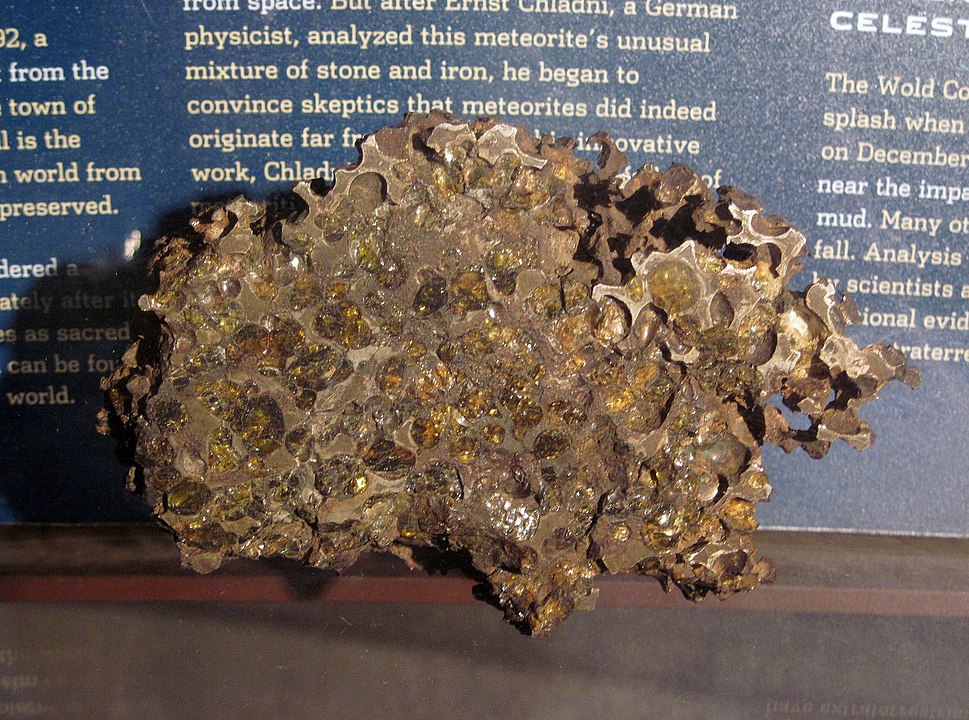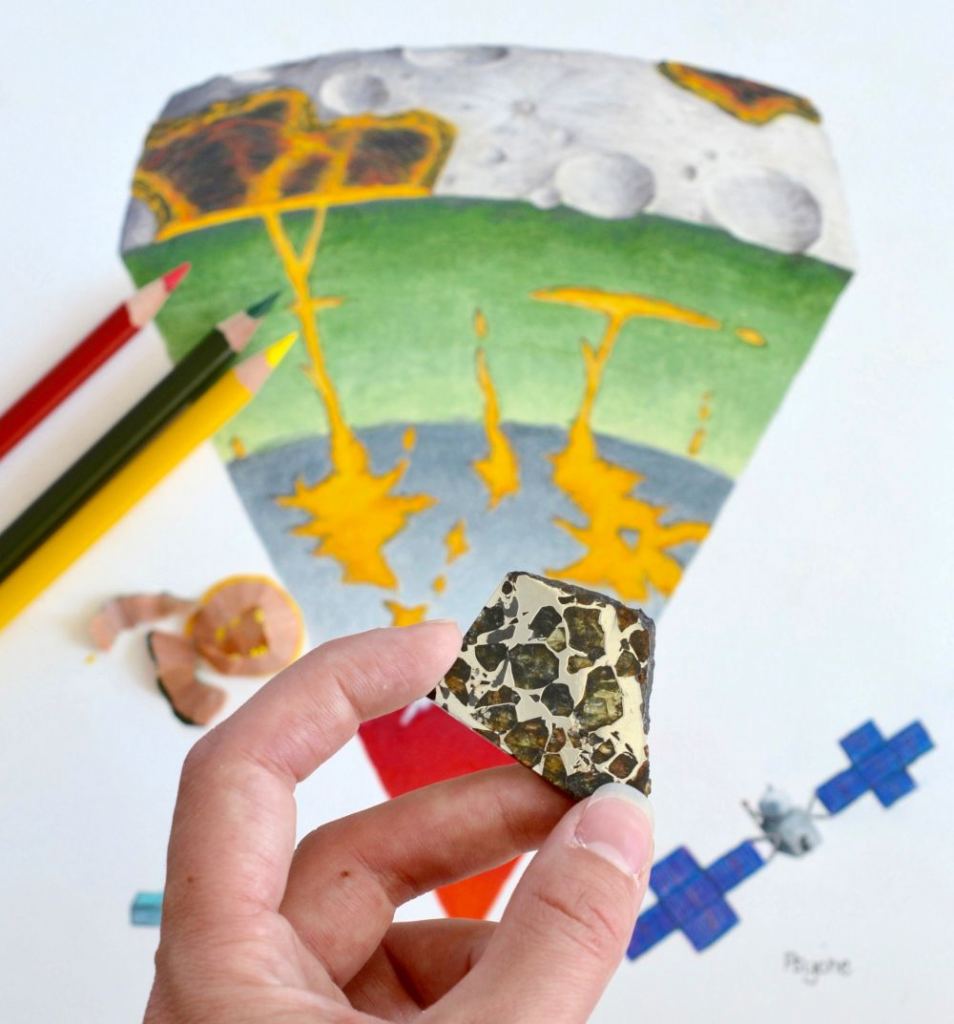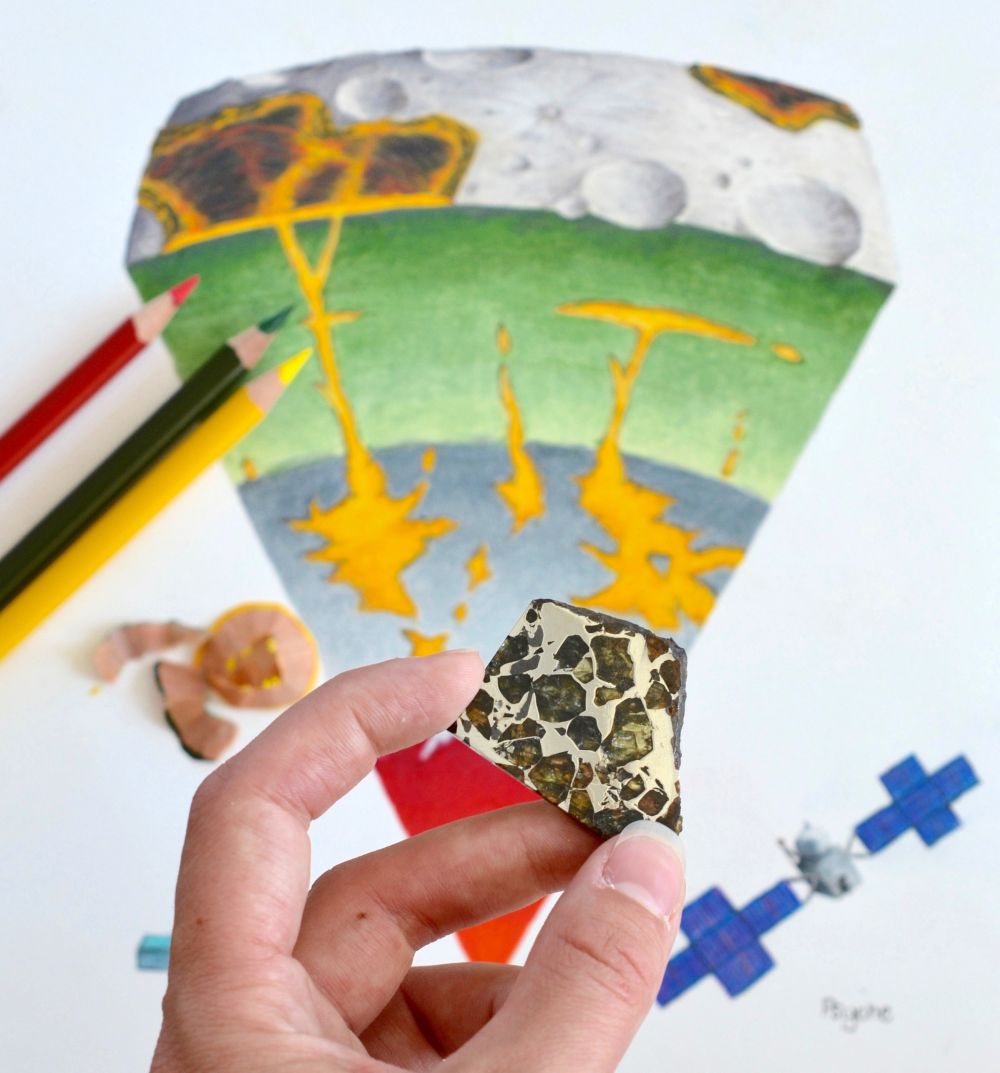Remember the asteroid Psyche? It’s the largest known asteroid in the asteroid belt between Mars and Jupiter. It’s been in the news because of its unusual properties, and because NASA plans to launch a mission to Psyche in 2022.
Psyche, aka 16 Psyche, is unusual because it’s quite different from other asteroids. Psyche appears to be the remnant, exposed nickel-iron core of an early planet. Because of that, Psyche is a building block left over from the early Solar System, when planets were still forming. It’s like a planet without a crust.
But Psyche has another weird characteristic that scientists are keen to study: it’s much less dense than it should be, given the fact that it’s largely composed of iron and nickel.
A new theory tries to explain how this iron-nickel asteroid, with a metallic surface, could have a density far lower than it should.
Psyche is a class of asteroid called a pallasite, after Peter Pallas, a German who studied the Krasnoyarsk meteorite in 1722. That rock fell to Earth near the Russian city of Krasnoyarsk, and was the first pallasite ever found. Those were back in the days when nobody believed meteorites even came from space. It weighed about 700 kg (1500 lb) and is one of only 61 pallasites ever identified.

While most asteroids consist mostly of rocky rubble, pallasites like Psyche are enigmatic, composed mostly of iron and nickel with olivine crystals entrained in it. Scientists think they formed when planetesimals collided, stripping away outer material and leaving the inner metallic cores. The asteroid then cooled from the outside in.
As it cooled, an alloy of residual melted pockets of iron, nickel and lighter elements like sulfur, might have erupted to the surface through fluid-filled cracks called dikes, creating virtual volcanoes of molten metal. That material would have created a coating on the topmost, rocky layer. That process is called ferrovolcanism.
Psyche may owe its lower-than-expected density to ferrovolcanism. Since Psyche, like other pallasites, is a mixture of core and mantle material, it may have experienced this type of mixing. The pockets of liquid metal mixed with sulfur are lower density than surrounding material, forming dikes that allowed ferrovolcanism to happen.

“Our calculations suggest that ferrovolcanic eruptions may be possible for small, metal-rich bodies, especially for sulfur-rich melts and bodies with mantles thinner than about 35 kilometers or bodies where the mantle has been locally thinned by large impact craters,” said co-author of the paper, Brandon C. Johnson, associate professor of earth, atmospheric and planetary sciences at Purdue University.
Since Psyche is one of the most massive bodies in the asteroid belt, at about 200 km (120 mi) in diameter, ferrovolcanism may explain its low-density, while also explaining the surface metallicity it shows in radar and other evidence.
“Ferrovolcanism may have transported core material to the surface, causing the radar detections of metal,” Johnson said.
Psyche’s density is so low that it’s about half that of an iron meteorite. It’s also the largest metallic asteroid in the Solar System, that we know of. If its low density is due to ferrovolcanism, as the authors of the paper say it might be, it’ll be up to NASA’s mission to Psyche to figure it out.

That mission is due to launch in 2022. It’ll be the first spacecraft to visit a metallic asteroid. Since ferrovolcanism is just a proposed model at this point, it’ll be up to that spacecraft to confirm its role. The mission to Psyche might also answer questions about the role metallic asteroids played in the development of the Solar System.
The paper outlining this work is published in the journal Nature Astronomy. It’s titled “Ferrovolcanism on metal worlds and the origin of pallasites.” The authors are Brandon C. Johnson, Michael M. Sori & Alexander J. Evans.
More:
- Research Paper: Ferrovolcanism on metal worlds and the origin of pallasites
- NASA: Psyche Mission
- Universe Today: Metal Asteroid Psyche Might Have Had Volcanoes of Molten Iron
- Wikipedia: Asteroid 16 Psyche
- Wikipedia: Pallasite

